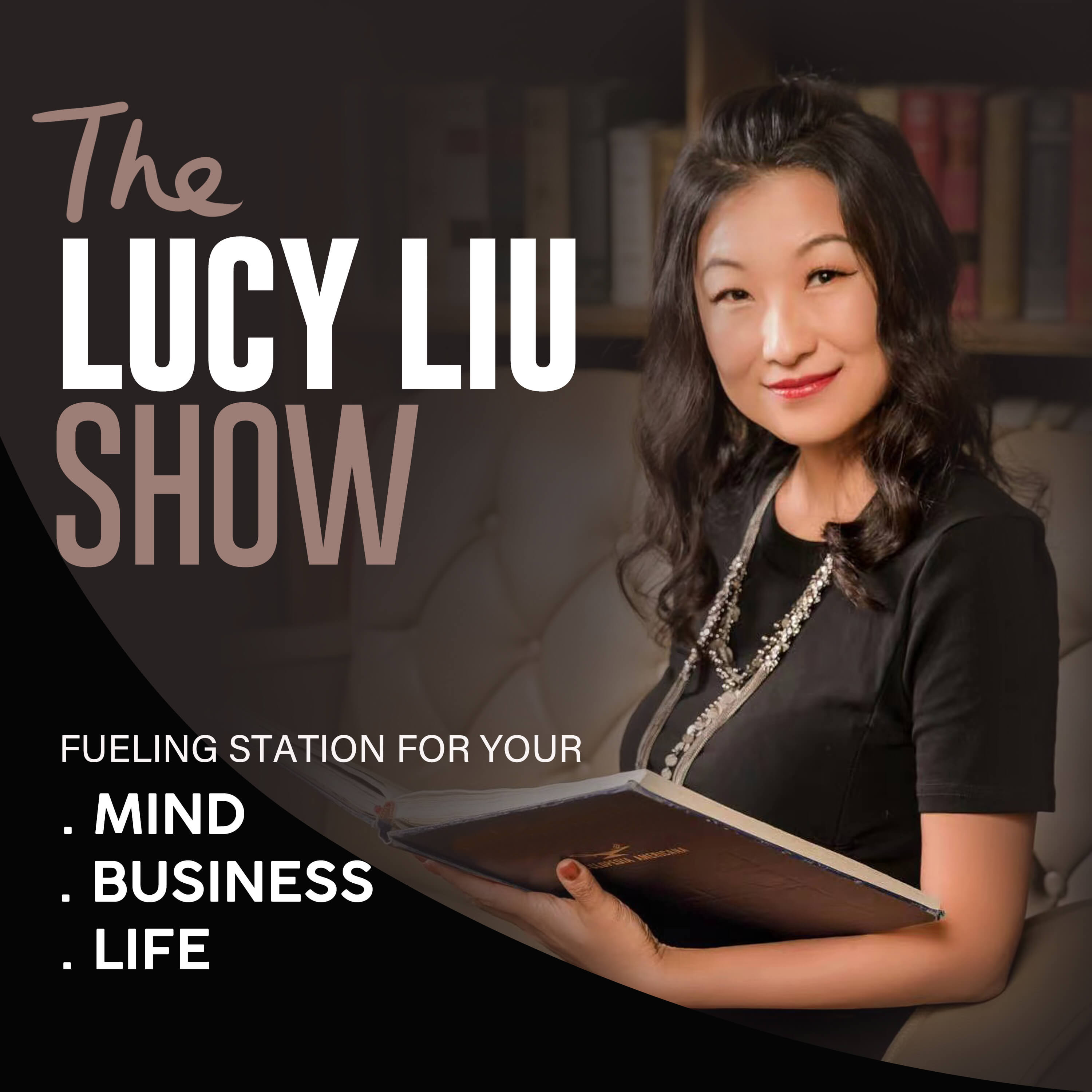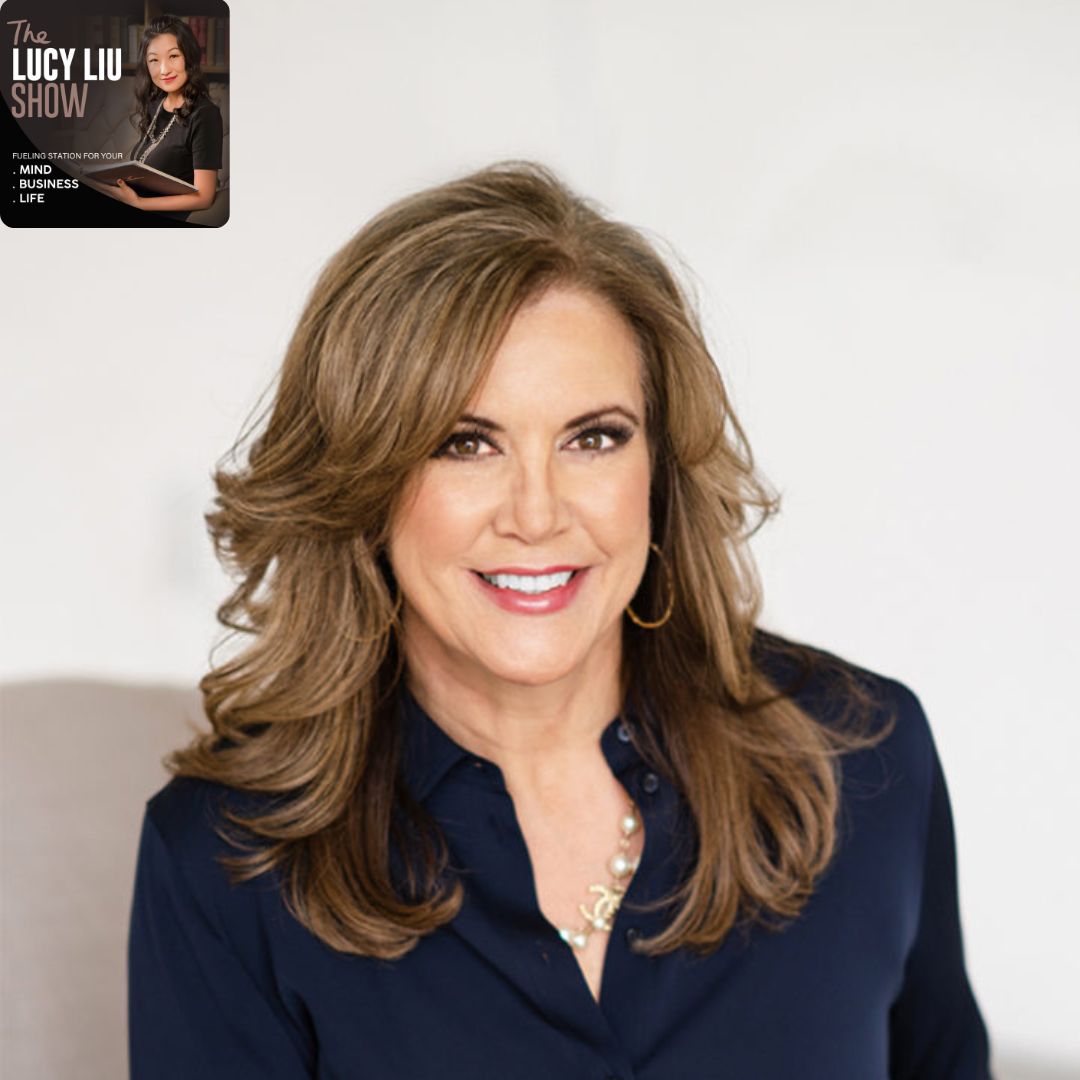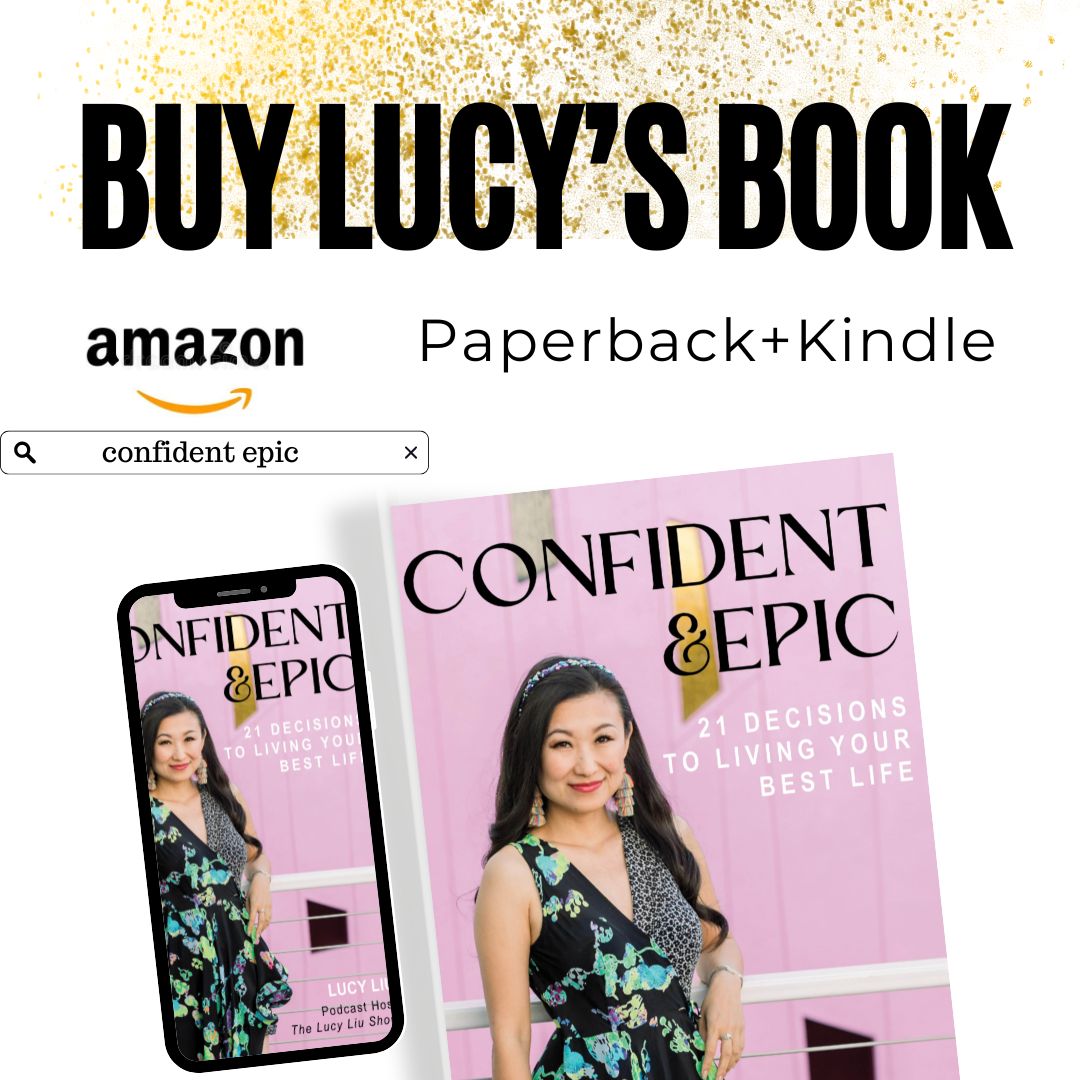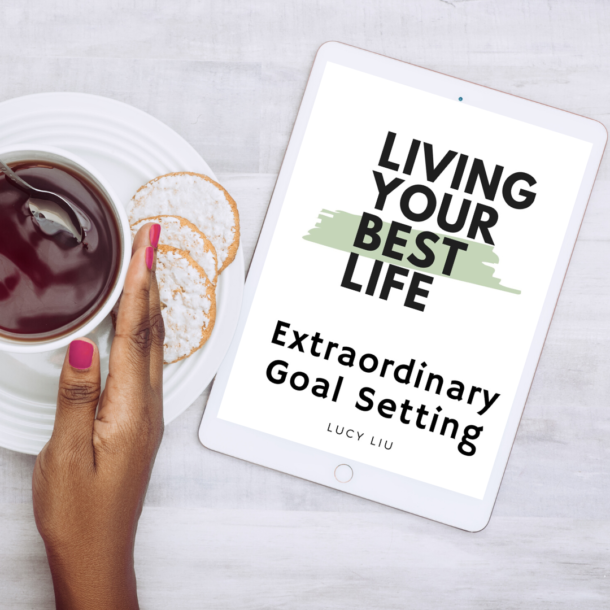Welcome to the show, Maya.
Oh my gosh, thank you so much for having me. I’m excited to start off the new years with you and the listeners.
Thank you. Well, it’s the beginning of the new year. And we all are looking to 10 x our life business, whatever, right?
But what does 10 x your life and business actually mean to you, Maya?
When I think about 10 x in my life, I think about how can I create a big enough vision that forces me to completely shift my identity from who I am into who I have to be to have the money that I want the relationships that I want the life that I want.
So when I think about 10 x, it’s not just about, oh, here’s a couple different, you know, new things that I could try. It’s about who do I have to be, I need to completely shift my thinking, shift my habits and shift my routines.
I love that so much. I talk about this with my clients as well, right? You are version 1.0. Right now, say you want to upgrade to version 2.0. But actually, what you want to think about is what would version 10.0 of you think, right? What would that version of you think and act and and what kind of embodiment does that need to happen?
100% I have this live event every year in Atlanta called impact weekend. It’s actually not that far from now it’s gonna be in February. But one of the first things that we do before we even dive deep into the business strategies is we do a guided visualization exercise.
And during that exercise, I’m having them think about three to five years into the future. And I’m like, what does your house look like? What does your body look like?
What are your relationships look like? What are your biggest achievements? And then once I have them visualize that in the visualization, I also have them journal in real time, what did I do five years prior to get to the life that I have now, and then I have them just embody being that person throughout the entire weekend.
So when I’m giving them the business strategies, and they’re running into resistance, and they’re running into fear, it’s like, you already know that this is possible for you, you have to have the mindset that I can do hard things. And then I’m fully equipped to be able to overcome any challenges that would keep me from having the life in the business that I want.
I love that. And you said the key word mindset, right? So before you have the 10x life and it’s really about 10x your thinking and 10x your mindset first, right?
100% 100%. When I think about mindset, the way that I frame it with my clients, I’m like, how can we have a VIP mindset? And what does that even mean?
I have them first think about the vision because you always have to have a level of clarity of where you want to go. It’s like, well, where do you want to go?
You don’t know what’s going to happen in your life five years from now, if you haven’t already made the decision in your mind what you want to happen.
So we have to get very, very clear on that vision. And then the I stands for identity, who is the person that you need to become? If you think about what you want for yourself five years from now, and you honestly answer the question, is the version of who I am right now capable of creating this life?
Or do I need to change some things? Do I need to wake up earlier? Do I need to start working out?
Do I need to work longer hours, you know, whatever it is starting to think about who I need to become? What are the new habits that I need to set? What are some of the routines that I need to start implementing?
And then the P’s stand for the people in the places, which really this is all about environment. Who are the people that I’m spending time with? And where are the places that I’m spending my time?
And sometimes we think about this so literally, we think about like, oh, where, you know, where am I hanging out with people? Or who am I talking to through text or on the phone or like going out to dinner with? And even just thinking about the people you’re following and the social media platforms that you’re on, how you’re allowing that to influence your mind, you have to be in so intentional about the podcast you’re listening to the books that you’re reading, the shows that you’re watching the music that you’re listening to, it can seem like those things aren’t a big deal.
But the way that we think affects our reality and the way that we think is heavily influenced by what we are watching and listening to.
Totally. And you mentioned podcast, I forgot to mention your podcast house, do and your podcast is called my podcast is called work hard, live soft.
And we just talk about what is the work that’s needed to be done. So you can live the soft life. So you can live a life that is fulfilling, impactful, and really enjoyable.
I love it. And I was listening this morning. And Maya is coming actually to us from Mexico, right?
Like that’s the soft life.
Yes, yes, I’m usually based in Atlanta. But when my lease ended, about a week and a half ago, I’m like, I want to just travel the world now. So I didn’t renew my lease, I made the decision, like, let me go to Mexico right before Christmas, just get some beach time, get some sun time, I love being by the water and getting some sun.
And then I just want to travel the world after this. I think I’ll try Columbia, I’ll try Thailand, I’ll go back to Bali. So I’m really excited to see what 2025 has in store in terms of just new revelation and exploring the world and exploring just my own growth.
That’s awesome. That’s just so awesome. And I mean, people say I’m going to travel, but a lot of people actually don’t do it.
Right? Like people say, I love traveling, I want to go travel the world. But where Where have you been?
Right? Right, you’ve been saying this, why haven’t you gotten that passport stamps? Why haven’t you booked the flight?
Yeah, but you know what, sometimes I mean, I absolutely believe in baby steps, because most people are actually doing nothing. They’re not taking any step forward. So even if you take baby steps, that’s actually what it takes to help move you forward.
So baby steps is always better than inaction. And inaction is a decision. And it’s all about decision making, right?
The type of decisions you make each day will add up to your entire life. But sometimes I feel like, yes, I believe in baby steps, but expedited growth could actually be easier than slow growth, meaning 10x is actually easier than just only two x in your life. Would you agree with me?
Yes, 100%. Just doing the big scary thing versus trying to tiptoe in. It’s kind of like, you know, when you go to the beach, or you go to the pool, and you’re like trying to put your toe in or you’re trying to slowly go in because you’re afraid to be cold.
And it’s like, girl, just jumped in, it’s gonna feel so much better if you just jump in versus trying to tiptoe in and feeling the slow pain along the way.
But, you know, we’re not talking about 10x like working 10 times the amount of hours that you do now. Okay, we’re not talking about that. We’re not talking about doing more work, because a lot of people feel like you actually need to do more work in order to make more money or accomplish more.
But I think what I preach is that we can actually accomplish more by doing less because we value our time more because we stay more focused. 100%.
Yeah, I completely agree with that. It’s not about doing more. It’s about having a bigger vision.
So what you do, you can maximize it better, and you can leverage it better. So even like when I think about my work ethic at you know, $100,000 versus my work ethic at a million dollars, I still had a lot of great work ethic. But a big difference with 10x in my revenue was not working harder, it was thinking bigger, and then making sure that I had the support and communicating that vision to the right people who could help me execute that vision.
Like if you’re trying to work your way to 10x, you’re going to get burnt out at about 3x or at about 5x, you have to think bigger and then say, what’s the type of work that I need to do so that way it gets better results faster. It’s kind of like going from one on one coaching to going to one to many. It’s like I can have the same results, but I’m spending this the same or less time working to get better results.
And you mentioned going from 100k to a million, like what is the biggest difference for you?
I think the biggest difference is honestly vision and having people who can help me execute that vision. When I was making $100,000, I remember the year before I had my first six-figure year, I made about $89,000. And I knew that I was like, this $11,000 gap is not a missing strategy that I have in place.
I knew for me, it was something mindset related. And so I asked myself and I’m very reflective and I asked myself questions and I’m like, what was that $11,000 gap? Why didn’t I make $100,000 when I had done five-figure months consistently and I was doing very well and I had a good audience.
And I know for me that it was, I lacked boundaries and there was a limiting belief that I didn’t deserve to make $100,000. And that limiting belief came from the fact that I was always the person amongst my friends and family where if they needed something, I would step in. I was that person that was essentially like a savior.
Like I just was not good at boundaries. And so one of the things that I had to figure out was how do I establish boundaries so I don’t feel like I have to give all of my gifts and all of my resources away for free. Once I started to develop my mindset around boundaries, I made, I think maybe like $150,000 a year later.
Then three years later, when I made that million dollars, I expanded my thinking and my beliefs to what was possible for me. I think we can work our way to $100,000. And then when you’re going to a million, your mind really has to shift into believing that not only can you do it, but that you’re deserving of it.
At any point, if you don’t believe you’re deserving of it, you’re going to ultimately self-sabotage the work that you’re doing or the opportunities that you attract or self-sabotage and you subconsciously reject. And so I think I needed to believe that it was possible. And I also needed to release a little bit of control on the how.
I remember writing down like prayers and affirmations. And I remember writing down like, I am so happy and grateful that I run a multimillion dollar company, helping women of faith without sacrificing my integrity. I knew what I wanted to do.
I knew the type of person I wanted to be when I hit that goal, but I didn’t have enough experience in business to know exactly how I was going to do it. I had some ideas in my head. And I think just having the vision, writing it down, making it plain and holding that vision every single day, you start to transform into the person who can attract that and actually build a million dollar business.
I love that. I love how you mentioned you’re attracting, you’re not begging for it. You’re not desperate, right?
Because sometimes women resort to a different energy when they’re not doing as good as they imagined. And they’re just desperately seeking the next marketing technique, or, you know, a different business coach that’s going to just magically wave someone and help their business. But I love how you your example was your boundaries, right, your control, your worthiness, it always comes back to self worthiness.
So it’s always about personal development, no matter where you are in life and business and career, wherever you are in life.
100%. And I love what you said about desperation. Like one thing that I tell women in my community is that desperation causes you to dismiss your discernment.
You make decisions differently when you’re desperate versus when you are feeling empowered. And when you are desperate, you’re grasping for anything. You’re not making decisions using wisdom, you’re making decisions from a lack mindset of like, let me just work with this person, or let me just sell this thing, or let me just price it here, because I’m so desperate, I need to make this money, or I need to be able to have these opportunities.
But when you have a strong belief that this is possible for me, and this is the standard at which I want to operate, you are confident saying no to more things, right? Here’s where boundaries come back into play, where you’re like, I’m okay with saying no to this thing that has been presented to me as an opportunity, because discernment has already clearly communicated to me that this isn’t for me, and that what is for me is not going to pass me by, because I’m feeling confident, and I’m feeling empowered. And I don’t need to operate with this level of desperation thinking that if I say no to something that I’ll never get the opportunity that I desire.
Beautifully said. So with your clients, what is the number one mistake you see them making that’s killing their confidence?
Oh, that’s killing their confidence. I would say, probably two things. I think comparing themselves to other people, and just like part of that comparison is making an assumption that what somebody else is doing is working.
Whether or not it’s working for them, it’s like, it doesn’t matter what’s working for them. Girl, you got to figure out what’s working for you. And so they’re making this comparison that this person is better, that what this person has going on is working, and whether or not it’s working.
The other mistake is your work ethic isn’t even matching. So if you’re going to compare somebody’s results, you better compare the work ethic. I don’t want to hear that you’re jealous that somebody made money.
I don’t want to hear that you feel a type of way that this person isn’t as talented as you, but they have more recognition. They’re still doing the work. And at the end of the day, when it comes down to business, the best marketer wins.
So if you’re not willing to create the content, you’re not willing to go live, you’re not willing to be visible, you’re constantly trying to build a business where you don’t have to do sales calls, you don’t have to do webinars, you don’t have to create content, you don’t have to write emails, you have no right to be trying to compare yourself to somebody who’s actively doing the work. And confidence comes from seeing the results from the work that you’re putting in. And so consistently, oftentimes what I see with people is that they’re upset about results that they didn’t get from work that they didn’t do.
And it’s like, it doesn’t work like that. You’re going to have to put in the work. And then we could start talking about maybe what we can tweak within your work for you to see better results.
Oh, I love that. I remember my first business coach, she really inspired me because she was making six figures with a email list of 400 people. So she was like, it doesn’t matter the size, it’s about what you are actually doing.
And I know this reminds me of one of your Instagram posts where you showed your past videos, like, you know, where you said, it’s not overnight success. So it’s like a 10 year in the making where you showed your videos from the past where there’s bad video quality, bad audio quality, when you said you had 30 subscribers, we all start from zero, right? There’s no overnight success.
We’ve all been there.
Yeah, yeah. And I think that goes back to your point where you said you believe in baby steps. And I love one of one of my inspirations is reading the Bible and just taking scripture and saying, How can I apply it or use this for And the word says that don’t despise small beginnings.
And I think sometimes we are when it comes to 10 xing, it is about 10 xing your vision, but also knowing what work needs to go in place to see that vision come to fruition. And it’s like the version of me that started when I was 18 years old, the version of me that started with zero, the version of me that started with janky video quality, janky audio quality, and not knowing what she was doing. Had I not been that version who was willing to start willing to fail, willing to look silly in front of people, willing to risk, you know, not looking like the perfect example of a brand strategist or the perfect example of an entrepreneur had it not been for that version of me that was willing to start small to then get something bigger, I wouldn’t be where I am right now.
So I just have to encourage everybody while you’re thinking about the bigger picture, you have to say, but what steps am I taking right now today in every single day to make sure that I am growing as a person because I have to do something today in order to make it better. Most people are so riddled with perfectionism because they’re so afraid to fail. And it’s like, you can’t perfect anything that you haven’t started.
You can’t make anything better that you haven’t put out into the universe. So take the small steps so you can live the bigger life.
Beautiful perfection is illusion. And practice leads to improvement, not perfection anyways.
Right? It’s like, perfection totally is an illusion. I’m like, I haven’t done anything perfectly yet. And I’ve been for over a decade.
Awesome, Maya. Well, on your low days, what is one quote that you go by that’ll help you pick yourself back up?
A quote? I don’t know if it’s a quote, more so than it is a perspective. I, I really operate with a perspective of gratitude.
And I think about how the worst part of my day or the most annoying part of my day truly highlights how blessed I am. If it’s like the worst part of my day was I had to walk in the rain and it’s like, well, girl, you are able-bodied and you’re able to walk. Or the worst part of my day was that I didn’t hit my revenue goal.
And it’s like, well, thank God you have a business where you’re hitting goals to the point where you feel sad that you didn’t make as much money. And so I think just having that perspective of, if this is the worst part of your day, you have a very rich life.
I love that. Thank you for sharing. Awesome.
So where can we find you?
Yeah. So you guys can find me on Instagram at Maya Elias, M-A-Y-A-E-L-I-O-U-S. I would love to connect with you.
And if you’re mapping out your 2025 goals and you want to see how I plan my year and my life in business, you can go to mayaelious.com slash dream life. I have a free dream life planner on there that I think will be very helpful for you.
Awesome. Thank you.



 Lucy Liu is a master life coach helping women uplevel in business and life to confidently live an epic life! She is an unshakable optimist, wife, mom, entrepreneur, workshop facilitator, motivational speaker, best selling author and podcast host of The Lucy Liu Show.
Entrepreneurs & high achievers hire her to see clarity and take quantum leaps FAST. Because most of them are overthinking, scattered and self-doubting. She's best at helping you get unstuck, make faster decisions and fulfill higher potential. Bottom line: not only make more money and impact, but have more fun and live an EPIC life by design.
She has been featured in Medium, VoyageLA, Elephant Journal, ThriveGlobal, South China Morning Post and dozens of other media outlets.
Lucy Liu is a master life coach helping women uplevel in business and life to confidently live an epic life! She is an unshakable optimist, wife, mom, entrepreneur, workshop facilitator, motivational speaker, best selling author and podcast host of The Lucy Liu Show.
Entrepreneurs & high achievers hire her to see clarity and take quantum leaps FAST. Because most of them are overthinking, scattered and self-doubting. She's best at helping you get unstuck, make faster decisions and fulfill higher potential. Bottom line: not only make more money and impact, but have more fun and live an EPIC life by design.
She has been featured in Medium, VoyageLA, Elephant Journal, ThriveGlobal, South China Morning Post and dozens of other media outlets. 


